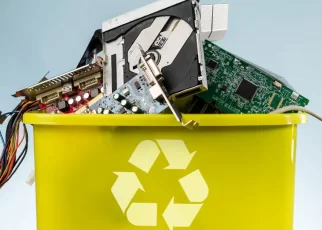All nations of the world are concerned about the rise in global warming. The United Nations has already convened several world conferences to combat global warming.
At a recent meeting in Glasgow, the nations of the world expressed concern over the rapid changes taking place in the environment due to rising global warming.
Although they strongly believe that ignoring current circumstances can turn into a looming alarm ahead which in turn can pus people to glooming times.
The participating countries in these meetings discussed in detail the steps to be taken to prevent global warming and put forward several proposals.
But the ultimate goal is to conserve at least 30 percent of the soil and water by 2030 and to take appropriate measures to conserve soil and water biodiversity to this extent.
By this deadline, all countries are determined to put a complete stop to deforestation, significantly reduce carbon emissions, and work towards a complete halt to the use of fossil fuels that contribute to carbon emissions by 2050.
Prime Minister Narendra Modi, who attended the meetings in Glasgow, made it clear that India would not bow to pressure from the West but outlined the steps India was taking to protect the environment. Modi said India was committed to protecting the environment to reduce global warming.
Various heads of state, including US President Joe Biden, have called for urgent action to reduce emissions and reduce global warming. These meetings focused primarily on curbing the use of fossil fuels.
Unfortunately, the COP-26 agenda does not address this worst issue for the environment. Without giving due importance to this worst topic in international conferences on climate change, it is impossible to achieve global warming goals.

One of the major things that have slipped out of the important list is e-waste. E-waste has been the major pollution player in the preceding years but no country has taken proper precautions to neither reduce nor recycle it effectively.
E-waste plays a major role in global warming. It is being carelessly dumped all around the world without realizing how hazardous it can be for the environment as well as the lives around it.
According to the latest estimates, 53.6 million tons of e-waste has been dumped last year, and year after year, it grows like a mountain of discarded waste and does not shrink at all. That is, on average, every human being in the world accumulates about seven kilograms of this garbage.
This electronic garbage is not waste it contains precious metals and can sum up to $ 10 billion a year but end up in dumping yards. More than 3 million tonnes of this waste is being dumped in India every year.
Developed countries that use electronic goods extensively are using poor countries as dumping yards to dispose of the accumulated e-waste in their countries. The United Nations ‘Step-Initiative’ (Solving-e-Waste Problem-Initiative) warns that in another four years the e-waste will grow by 33 percent every year, more than the size of the eight Great Egyptian Pyramids. The United Nations University launched the ‘Step Initiative’ in 2007 to address this worst problem that has become a global problem.

A large number of spare parts for mobile phones, laptops, desktops, tabs, digital cameras, electronic toys, etc are being manufactured every year. With every now and then evolving technology and gadgets the old ones are going to find a home in the waste. When compared to the daily wet and dry garbage that accumulates in homes, e-waste is more harmful to the environment.
Electronic goods include not only precious metals but also contain dangerous heavy metals such as lead, tin, mercury, arsenic, cadmium, lithium, and barium. A simple mobile or laptop circuit board contains sixteen different metals.
If these reach the ground, the soil will degrade. If it reaches the reservoirs, drinking water pollution is inevitable. Even if it eventually reaches the oceans, it is a threat to the survival of the aquatic life that lives in the oceans. Plastic is the most widely used material in the manufacture of electronic goods. It is common to burn precious metals to separate and collect them from the electronic waste that enters the landfill which in turn will contribute to air pollution.
As the lifespan of electronic goods decreases the pile of e-waste increases. Only a few nations which as released the actual effect of it are taking serious measures while the others are sanctioning rules leisurely. About 1.3 million tonnes of e-waste from European countries are shipped to backward Africa and Asia each year.
Garbage pollution accounts for more than twenty percent of all deaths each year in Africa and Asia, which have become dumping grounds for e-waste.
The ‘Step Initiative’ estimates that India is the third-largest e-waste generator. By the end of this year, around 5 million tonnes of e-waste will be produced in our country.
India is the third country after China and the United States. China stands highest at 10.1 tonnes, followed by the United States at 6.9 million tonnes and India at 3.2 million tonnes, according to international figures. Superpowers such as the United States are moving waste to poorer countries, rather than recycling it.
Workers engaged in collecting precious metals from this waste are prone to chronic ailments such as headaches, respiratory ailments, chest pain, lethargy, drowsiness, and severe mental stress. Medical researchers have found that DNA is also damaged in people who spend a lot of time in the garbage.
According to official figures released this year, only 3.5 percent of the e-waste collected in 2018–19 and 10 percent in 2019–20 was collected for recycling. The rest of the waste is reaching the environment.
In our country, the records of local companies collecting garbage are almost non-existent. Only 312 official centers across the country are engaged in the e-garbage collection. Apart from this, there are unofficial e-waste recycling centers in Seelampur in Delhi, Dharavi in Mumbai, Meerut, and Moradabad.
In these factories, there are no trained workers, no minimum facilities, and no precautions, the harm caused by e-waste recycling is far greater than the harm to the environment.
All they do is recycle the collected e-waste by separating and collecting precious metals from damaged equipment! For this purpose, they use acids mixed with cyanide. The toxic fumes emitted in the process can cause long-term health problems for workers at the centers as well as the surrounding population.
In the wake of this becoming a global problem, various countries have agreed to formulate special rules for this in discussions in various international forums.
As part of this, the Central Government formulated the ‘e-Waste Management Rules’ in 2016, which came into force on October 1, 2017. Only licensed companies are required to perform this type of waste recycling. Despite the enactment of these regulations, there are more unauthorized recycling centers in the country that do not have the minimum facilities than licensed recycling centers. Compared to the total accumulated e-waste, there is very little going to the recycling centers. Everything else is flowing into empty spaces, rivers, and seas, causing massive damage to the environment and public health.
Exposure to these pollutants can lead to growth defects, dementia, weakened immune system, infertility, hormonal imbalances, impaired function of vital organs such as kidneys, liver, heart, DNA changes, muscle weakness, osteoporosis, and lung cancer. Problems, such as severe health problems such as damage to the nervous system. These problems can lead to premature death.
Also Read: Can You Believe That This American Village Lives With No Technology





